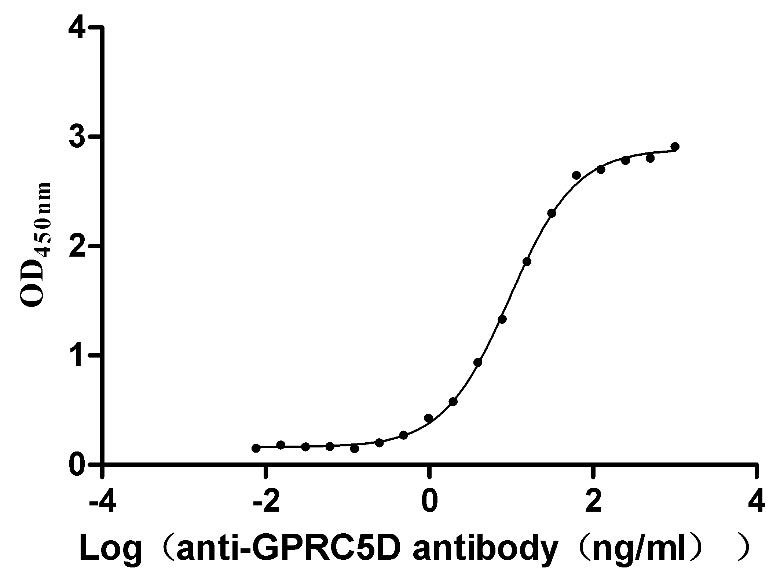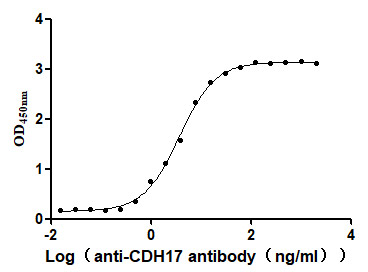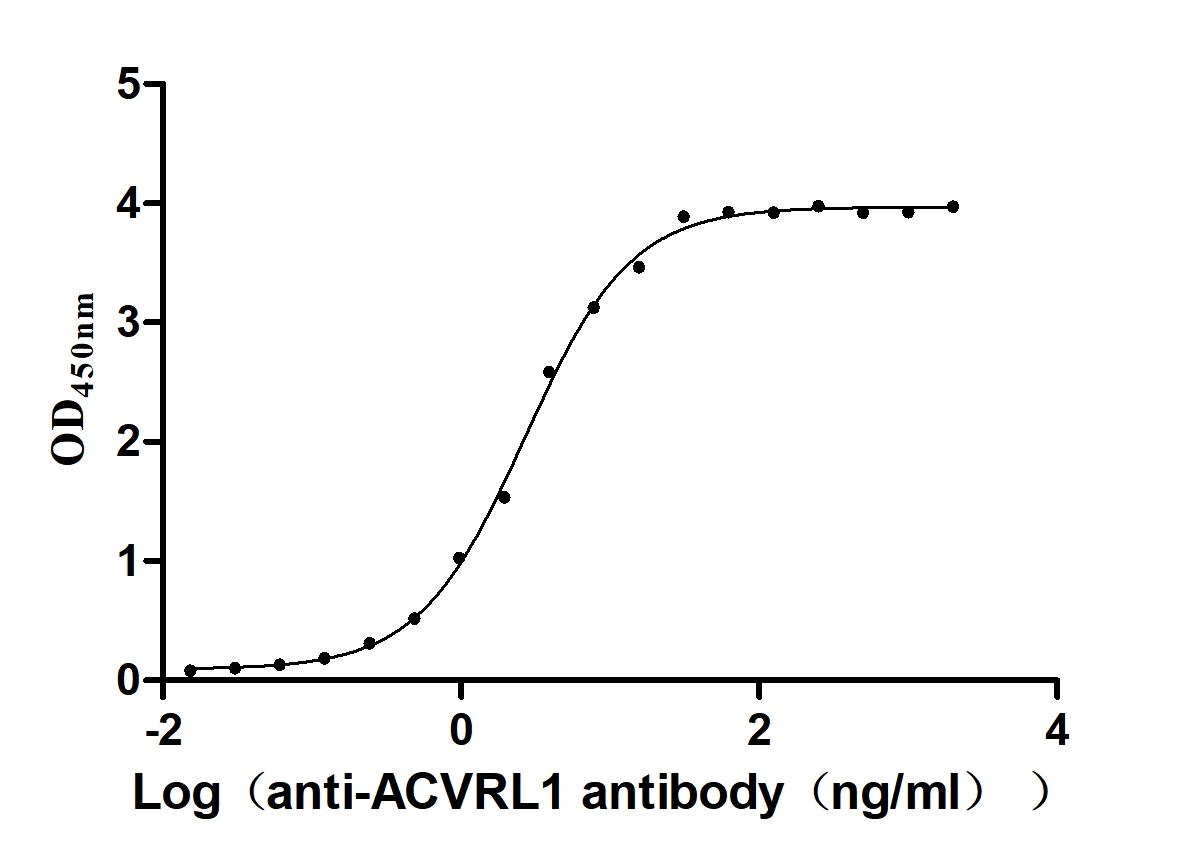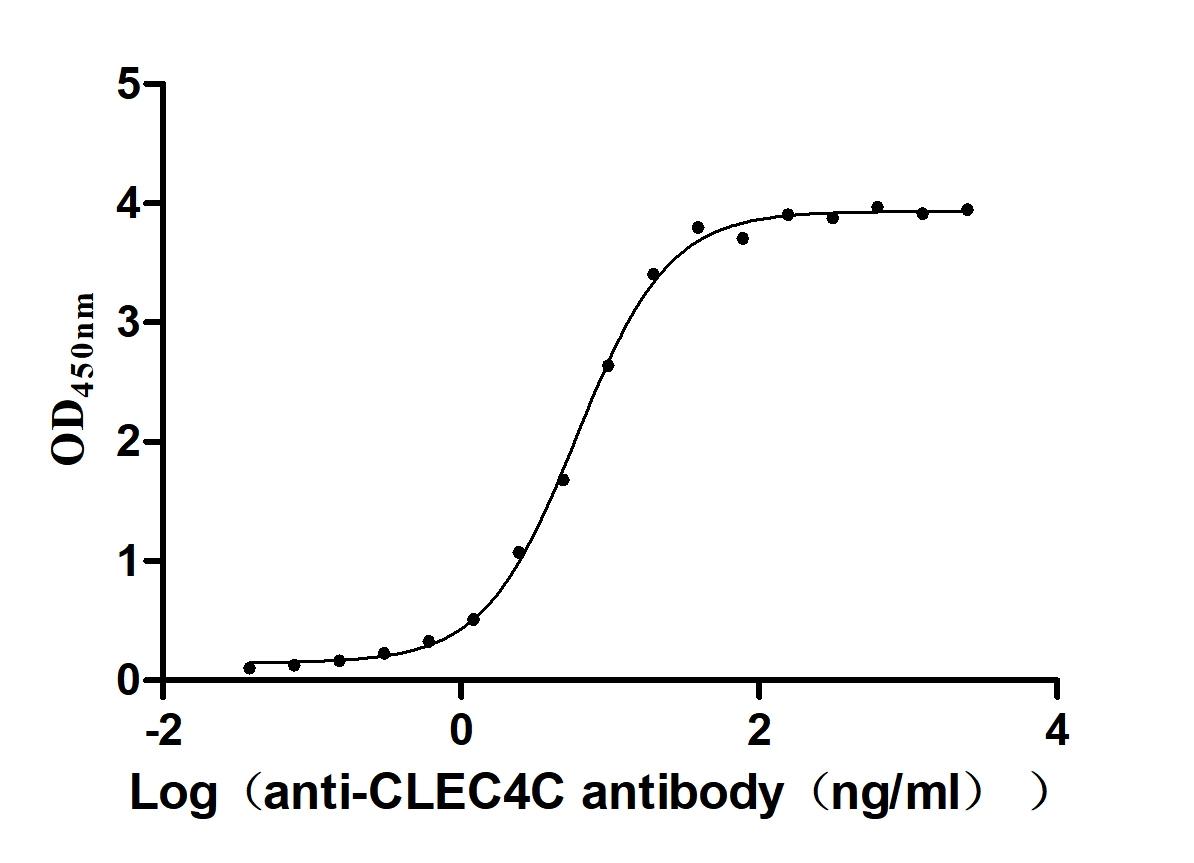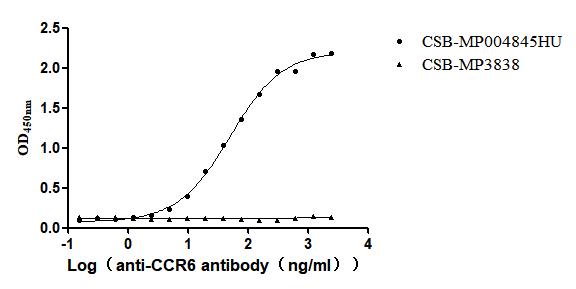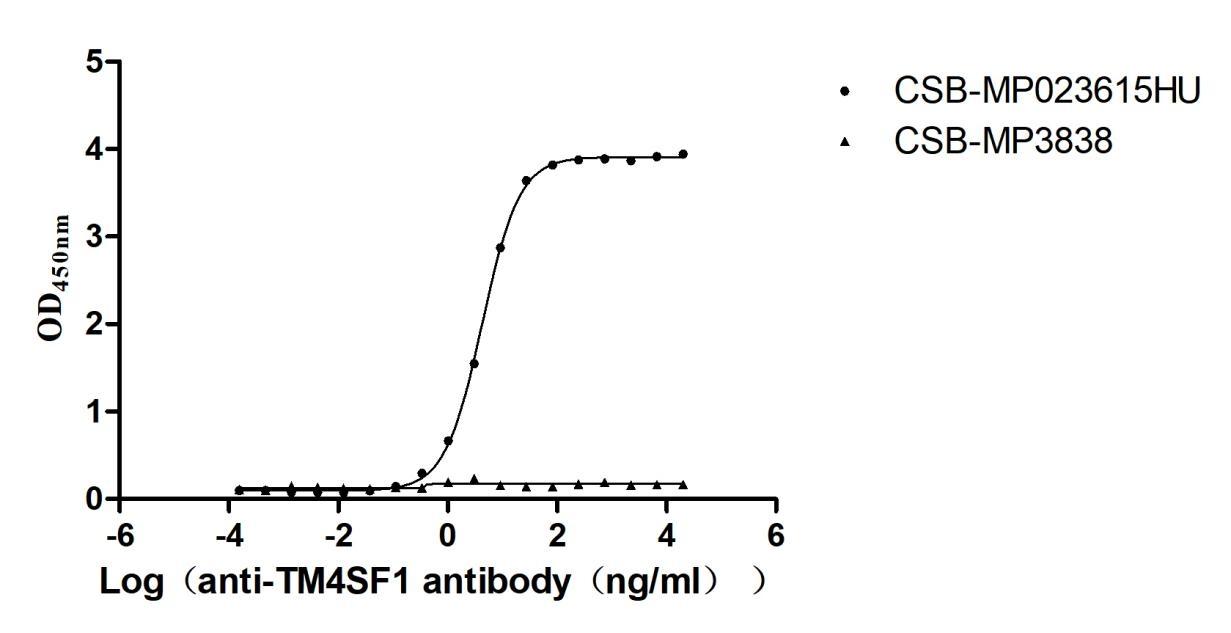Recombinant Human Dolichyl-diphosphooligosaccharide--protein glycosyltransferase subunit STT3A (STT3A), partial
-
中文名称:人STT3A重组蛋白
-
货号:CSB-YP022885HU
-
规格:
-
来源:Yeast
-
其他:
-
中文名称:人STT3A重组蛋白
-
货号:CSB-EP022885HU
-
规格:
-
来源:E.coli
-
其他:
-
中文名称:人STT3A重组蛋白
-
货号:CSB-EP022885HU-B
-
规格:
-
来源:E.coli
-
共轭:Avi-tag Biotinylated
E. coli biotin ligase (BirA) is highly specific in covalently attaching biotin to the 15 amino acid AviTag peptide. This recombinant protein was biotinylated in vivo by AviTag-BirA technology, which method is BriA catalyzes amide linkage between the biotin and the specific lysine of the AviTag.
-
其他:
-
中文名称:人STT3A重组蛋白
-
货号:CSB-BP022885HU
-
规格:
-
来源:Baculovirus
-
其他:
-
中文名称:人STT3A重组蛋白
-
货号:CSB-MP022885HU
-
规格:
-
来源:Mammalian cell
-
其他:
产品详情
-
纯度:>85% (SDS-PAGE)
-
基因名:
-
Uniprot No.:
-
别名:B5; Dolichyl-diphosphooligosaccharide--protein glycosyltransferase subunit STT3A; FLJ27038; Integral membrane protein 1; Integral transmembrane protein 1; ITM1; MGC9042; Oligosaccharyl transferase subunit STT3A; STT 3A; STT3 subunit of the oligosaccharyltransferase complex homolog A; STT3-A; STT3A; STT3A_HUMAN; TMC; Transmembrane protein TMC
-
种属:Homo sapiens (Human)
-
蛋白长度:Partial
-
蛋白标签:Tag type will be determined during the manufacturing process.
The tag type will be determined during production process. If you have specified tag type, please tell us and we will develop the specified tag preferentially. -
产品提供形式:Lyophilized powder
Note: We will preferentially ship the format that we have in stock, however, if you have any special requirement for the format, please remark your requirement when placing the order, we will prepare according to your demand. -
复溶:We recommend that this vial be briefly centrifuged prior to opening to bring the contents to the bottom. Please reconstitute protein in deionized sterile water to a concentration of 0.1-1.0 mg/mL.We recommend to add 5-50% of glycerol (final concentration) and aliquot for long-term storage at -20℃/-80℃. Our default final concentration of glycerol is 50%. Customers could use it as reference.
-
储存条件:Store at -20°C/-80°C upon receipt, aliquoting is necessary for mutiple use. Avoid repeated freeze-thaw cycles.
-
保质期:The shelf life is related to many factors, storage state, buffer ingredients, storage temperature and the stability of the protein itself.
Generally, the shelf life of liquid form is 6 months at -20°C/-80°C. The shelf life of lyophilized form is 12 months at -20°C/-80°C. -
货期:Delivery time may differ from different purchasing way or location, please kindly consult your local distributors for specific delivery time.Note: All of our proteins are default shipped with normal blue ice packs, if you request to ship with dry ice, please communicate with us in advance and extra fees will be charged.
-
注意事项:Repeated freezing and thawing is not recommended. Store working aliquots at 4°C for up to one week.
-
Datasheet :Please contact us to get it.
相关产品
靶点详情
-
功能:Catalytic subunit of the oligosaccharyl transferase (OST) complex that catalyzes the initial transfer of a defined glycan (Glc(3)Man(9)GlcNAc(2) in eukaryotes) from the lipid carrier dolichol-pyrophosphate to an asparagine residue within an Asn-X-Ser/Thr consensus motif in nascent polypeptide chains, the first step in protein N-glycosylation. N-glycosylation occurs cotranslationally and the complex associates with the Sec61 complex at the channel-forming translocon complex that mediates protein translocation across the endoplasmic reticulum (ER). All subunits are required for a maximal enzyme activity. This subunit contains the active site and the acceptor peptide and donor lipid-linked oligosaccharide (LLO) binding pockets. STT3A is present in the majority of OST complexes and mediates cotranslational N-glycosylation of most sites on target proteins, while STT3B-containing complexes are required for efficient post-translational glycosylation and mediate glycosylation of sites that have been skipped by STT3A.
-
基因功能参考文献:
- Study reports that STT3B-oligosaccharyltransferase, but not STT3A-oligosaccharyltransferase, is a lipid-linked oligosaccharide hydrolase. PMID: 30181269
- DC2 and KCP2 mediate the interaction between the oligosaccharyltransferase STT3A and the endoplasmic reticulum translocon. PMID: 28860277
- This study showed that Congenital Disorder of Glycosylation Caused by Mutations in STT3A. PMID: 28424003
- Consensus sites containing large hydrophobic and negatively charged middle residues are frequently skipped by STT3A during protein translation. PMID: 25029371
- Results show homozygous mutation in STT3A and in STT3B causes congenital disorders of glycosylation. PMID: 23842455
- DDIT3, STT3A, ARG2 and FAM129A immunohistochemistry does not appear to be useful in the diagnosis of thyroid follicular neoplasias, as they do not reliably distinguish follicular thyroid carcinoma from follicular thyroid adenoma. PMID: 22157935
- Gene-expression data suggest a difference in expression between STT3A, Clorf24, and TFF3 in FAs versus carcinomas that may be detected from an FNA sample. Findings must be validated from preoperative FNAs in larger numbers PMID: 21520112
- The STT3A OST isoform is primarily responsible for cotranslational glycosylation of the nascent polypeptide as it enters the lumen of the endoplasmic reticulum. PMID: 19167329
显示更多
收起更多
-
相关疾病:Congenital disorder of glycosylation 1W (CDG1W)
-
亚细胞定位:Endoplasmic reticulum. Endoplasmic reticulum membrane; Multi-pass membrane protein.
-
蛋白家族:STT3 family
-
组织特异性:Expressed at high levels in placenta, liver, muscle and pancreas, and at very low levels in brain, lung and kidney. Expressed in skin fibroblasts (at protein level).
-
数据库链接:
Most popular with customers
-
Recombinant Human G-protein coupled receptor family C group 5 member D (GPRC5D)-VLPs (Active)
Express system: Mammalian cell
Species: Homo sapiens (Human)
-
Recombinant Human Cadherin-17 (CDH17), partial (Active)
Express system: Mammalian cell
Species: Homo sapiens (Human)
-
Recombinant Human Serine/threonine-protein kinase receptor R3 (ACVRL1), partial (Active)
Express system: Baculovirus
Species: Homo sapiens (Human)
-
Recombinant Macaca fascicularis C-type lectin domain family 4 member C(CLEC4C), partial (Active)
Express system: Mammalian cell
Species: Macaca fascicularis (Crab-eating macaque) (Cynomolgus monkey)
-
Recombinant Human C-C chemokine receptor type 6(CCR6)-VLPs (Active)
Express system: Mammalian cell
Species: Homo sapiens (Human)
-
Recombinant Human Transmembrane 4 L6 family member 1(TM4SF1)-VLPs (Active)
Express system: Mammalian cell
Species: Homo sapiens (Human)


